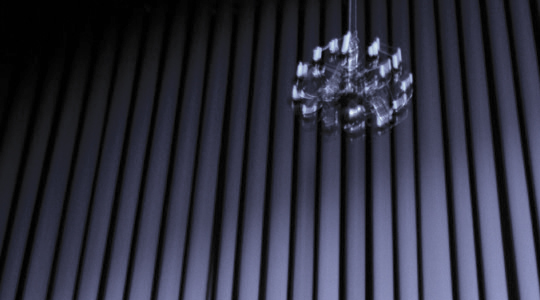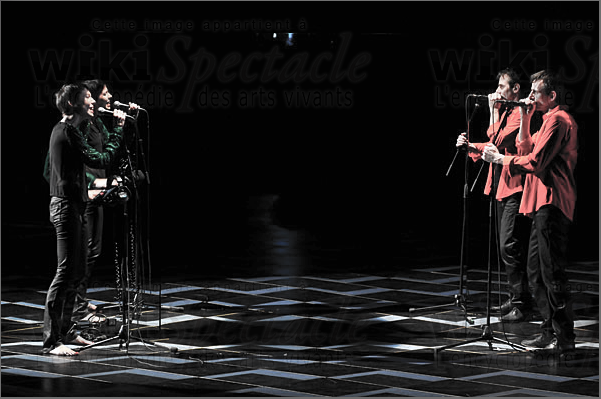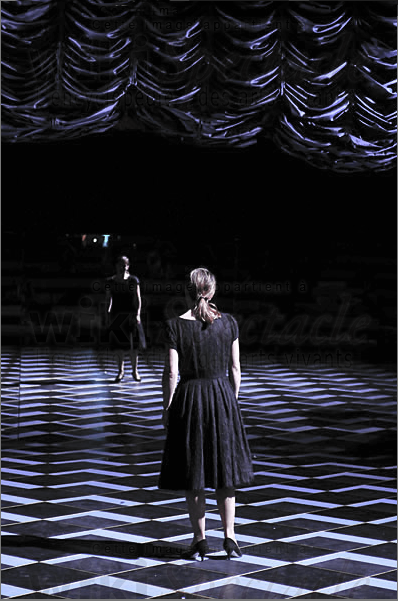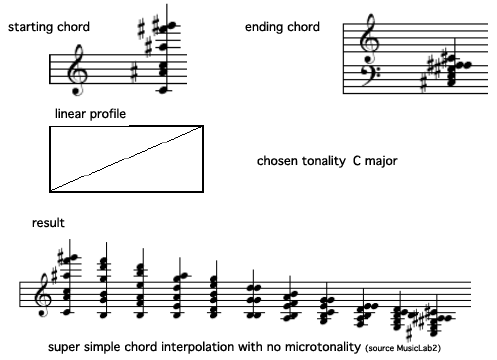04_2011
+++++++++++++++++++++++++++++++++++++++++++++++++++
The Second Woman is an opera created on april 26th 2011 at the Bouffes du Nord in Paris, France. It is a production and coproduction by the Théâtre des Bouffes du Nord, Opéra de Reims, Grand Théâtre de Luxembourg, Ensemble Court-Circuit, Comédie de Reims, La Muse en circuit, Centre National de création musicale and the help from Arcadi and SACD.
The piece got the Grand Prix de la Critique 2011 in music.
The Second Woman is playing within the echoes of a sensitive and probable cult movie from John Cassavetes… This tragi comical staging is an opera where the singer, because of its age, loses its certainties and questions the best place for her voice. This is the intriguing argument for an opera Opening Night.
The rehearsal planning is disturbed by the madness of a diva whose whims become the most uncontrollable wandering. It turns into a pirandellian canvas in which hallucinations of the lady are fathomed through a detailed review of major roles of the lyrical repertoire.
Then Frederic Verrieres recomposes spooky visions of the Verdi, Puccini and Berg music… Everything is unraveled with a libretto from Bastien Gallet. The piece itself is the instant gratification of a journey denying the obstacle. This amused and transgressive view focuses on a work in progress that bring a disaster to its advantage thanks to the staging direction of Guillaume Vincent.
The electronic part mainly consists on several micro tuning techniques on both silent pianos.
with
Jean-Yves Aizic
Jean-Sébastien Bou
Elizabeth Calleo
Jeanne Cherhal
Jean Deroyer
Marie-Eve Munger
Philippe Smith
Ensemble Court-Circuit
Jean Deroyer – direction
Guillaume Vincent – director
Frédéric Verrière – director
Bastien Gallet – libretto
Christophe Capacci – artistic advisor
Olivier Pasquet – electronics
Christophe Mazzella – sound engineer
James Brandily – stage design
Sébastien Michaud – light design
Fanny Brouste – dress design
Marion Stoufflet – dramaturgy
The acoustic music of The Second Woman does not belong to any special type; if one can possibly define types of music. To be simple, it probably oscillates between a kind of music based on popular singing, some kind of film music and some kind of strait-forward contemporary music. In this case, the fact it is between various types even better show the inaccuracy to designate those types.
The popular singing responsibility is hold by Jeanne Cherhal. She is a song music singer and clearly brings a dynamic and brightness to the show. The film music side comes from Frédéric Verrière instrumental compositions for cinema. The contemporary music side comes a little from the writing and also from the electronic part.
The concept of the system is quite simple and effective. It is based on harmonic linear and non-linear distortions. Melodies and chords are vertically stretched and reversed. A central note could become the center of homothecy, the center of reversing or point of a stretch change. A special moment, like a cluster, could be a date for a drastic change in the pitch relations. This twisting technique has widely been used. It becomes musically interesting when the starting material has a clear logic. It is even fun to experiment with a well known and recognizable component. For instance the harmonic logic can sometimes be easily understood with tonal music. Using Debussy or Brahms extracts or re-arrangements from them as starting point rise many interesting questions about the necessity for simple music, the necessity for tonal music, copyrights and even about sampling excerpts. Those questions can be wiped out if the composer chooses not to clearly show where it is coming from. But it is more fun to at least show it once in a time.
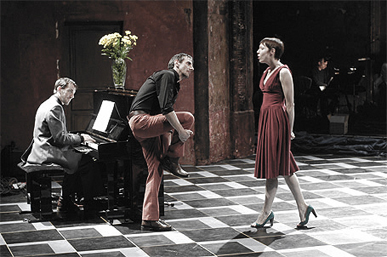 |
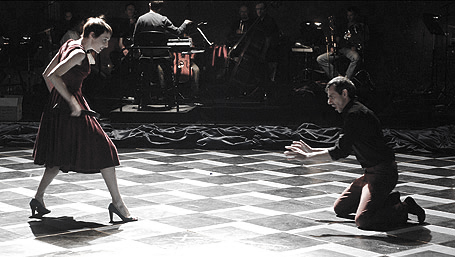 |
One can make chord interpolations over time or chromaticism by distorting a specific harmonic grid or a scale. This is widely used in the piece. For instance, the pianist plays wide scales from the bottom to the high register. The first played key then corresponds to the first chord and the last key to the last chord. The pianist then triggers chords with only one note at a time. Although it is not very important for the musical result, The Second Woman unfortunately does not deeply use the idea. The pianist only triggers semitone after semitone rather playing some melody that would sound like a more complex harmonic evolution than just linear interpolation. The interpolation does not have the same amount of notes during one interpolation; the number of notes varies in the chord.
When twisting, notes placement do not naturally fit the chosen tonality constrains. Even more, they are not obligatory moved to an exact semitone. These resulting displaced notes can then be synthesized with the exact found pitch (or frequency). They can also be set back to a position that would fit some particular temperament. This is what happens in the piece when notes are transposed to the closest proper pitch, I usually say they are “quantized“. One could say it is a more general tonality conception with tight links from the usual ones. The temperament has to change during the piece because of orchestration issues with the other instruments in the ensemble.
This might sound very basic for most people but it is very interesting to play with the perceptive limitations of the ear. The brain makes a different interpretation of a specific stimulus depending on the properties of this same stimulus. For instance, separated attacks become a pitched sound when their period of repetition goes below our memory limits. Another example, linked to the exact same both physiologic and psychologic properties, is pitch separation. We hear a chord with two pitches when two sine tones are played far enough from each other. We hear an amplitude modulation (beating effect) when they get closer. And we finally hear a unique new sound when they get much closer. The situation is much more complex when we deal with many pitches or other sounds than pure sounds. Control and feeling about this is a real artistic activity if it has to be used musically; these are the first steps for musical harmony.
I am not musicologist nor neuroscientist but I have the feeling this interesting fact can be projected to the way we define complexity, relations and boundaries between randomness and systematize.
In The Second Woman, the pianist sometimes plays scales to make chord interpolations. Microtuna is used. This is a simple utility that dynamically controls the tuning of kontakt sampler instruments.
A midi controller changes the tuning for each following midi note. That allows any kind of microtonality to dynamically change over time. For instance, a 1/16th tone piano normally has a narrow tessitura since it only has 88, 92 or 97 notes. By shifting the range, a pianist can then change its register while playing. Another example is the possibility to generate an original temperament scale containing 1/2nd, 1/4th, 1/8th, 1/16th or any other interval. Using the pitch bend (wheel) controller would change the played notes all together.
Beside this harmonic work, Second Woman includes transformations for voices and electronic solos parts. Fredéric Verrière also made music pieces in the same style as Bjork.
